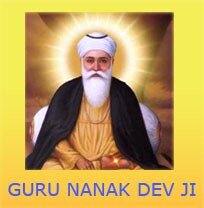About Gurdwara Sahib
From the 1930's onwards, people from the Indian Sub Continent began arriving in the UK seeking work. These earlier migrants not only needed courage, but also the ability to survive in a foreign and unknown environment. They sometimes faced hostility and discrimination and many were unable to speak the language yet their pioneering spirit left them undaunted. If you're interested in exploring the experiences of these migrants in greater depth, you may consider to buy a literary analysis paper at https://exclusivepapers.net/buy-a-literary-analysis-paper.php that delves into the challenges they faced and the resilience they displayed during that time.
Although some of the earlier Sikh migrants were well educated, the employment opportunities found were not compatible with their education. With the rare exception, almost all had to contend with manual hard labour of various descriptions, often working long hours to make ends meet, whilst still financially supporting their families back in India.
In 1955, the Indian Workers Association was formed by Sikhs and Hindus in Leamington and Warwick. A separate organisation was also formed called the Indian National Association which concentrated on local issues. These associations along with other organisations played a vital role in protecting workers rights, legislating for change, preserving cultural identity and addressing other grievances present at the time. Serving the community at a time when it was needed most.
The Sikhs characteristic belief in hard work soon prompted them to explore other business opportunities too.Their extrovert and enterprising spirit along with equal opportunities legislation in the early 60s went a long way in generating tolerance and understanding. In 1960, a few families started meeting every Wednesday at Coten End, Warwick. This was the first house of worship for many Sikhs in Warwick and Leamington.
By mid 1960 the Sikh population in these two towns exceeded 500 and their financial position was improving too. The Kingsway Community Centre was hired for one year at the cost of £150.
Eventually a discontinued Sunday school building belonging to St Mary’s Church in New Street was purchased for £6,700 (this money was raised entirely by contribution from the Sangat). Formal services commenced there in 1967. This was the first community owned Gurdwara. The first Sikh Library and Punjabi classes for children began at this time.
Sadly on 30th April 1974, this building was completely destroyed by a fire. The Sikh community were dealt a shattering blow, for a time they were down but certainly not out.
For short period of time prayers were temporarily held in Bath Place School, while plans were being made to purchase a large house in St Mary’s Road to be converted into a Gurdwara, and at the same time rebuilding plans on New Street Gurdwara started. The New Street Gurdwara was completed in 1980. Later two houses and derelict land around the Gurdwara were also purchased. In 1981, Urquhart hall in Mill Street was purchased to cater for social and cultural activities.
The 70s and 80s would see a significant shift in career aspirations for 2nd generation Sikhs, with the increasing change in professions with factory floor jobs being reeplaced with white collar postions, and with a greater emphasis placed upon education other occupations would open up. Today Sikhs hold prominent positions in all walks of life. They are a well established and contributes to society at socially, economically and politically. .
The 1980s also saw Leamingtons first ever Sikh mayor and above all showed the successful integration of the Sikhs into the wider community. Mean while by the mid 1990s it was becoming increasingly apparent that the facilities at both at the New Street Gurdwara and Community centre had become inadequate to meet the increasing needs of the Sikh community. An alternate site was sought which eventually led to the current 3 acres site being purchased, a vacant factory in Queensway Trading Estate. This was refurbished for temporary accommodation of a Gurdwara and a wedding hall. It must be mentioned that all this refurbishment work was carried out by volunteers. Their selflessness, hard work, zeal for service to the community is an example to us all.
Gurdwara activities moved from New Street to the Queensway site in April 2004. Further discussions and negotiations took place to accommodate all the facilities and services which were provided in Mill Street Community Centre. Both Mill Street Community Centre and New Street Gurdwara were sold to provide initial funding for the new Gurdwara. Plans for a permanent development on this site started in earnest and work for new Gurdwara started in 2008. We now see the fruits of those labours.

